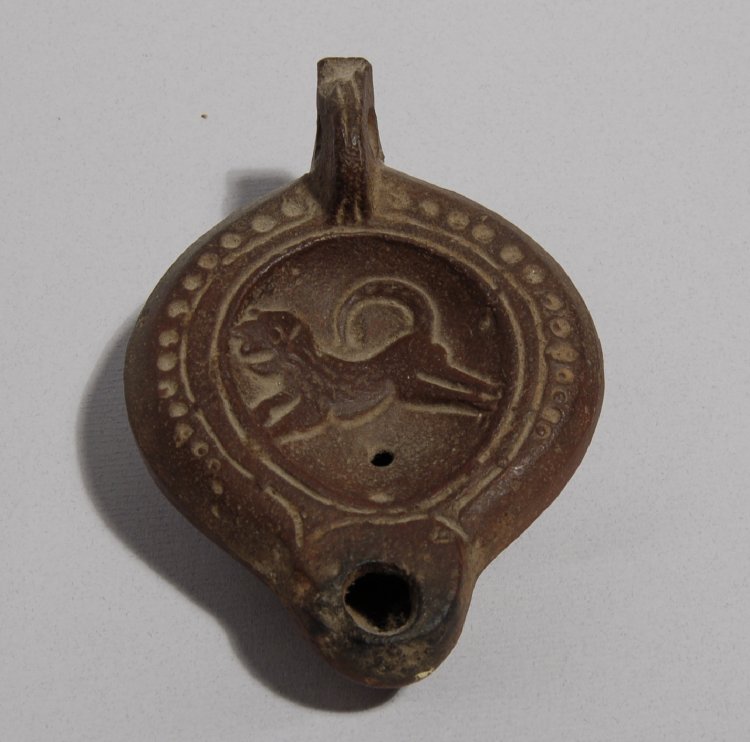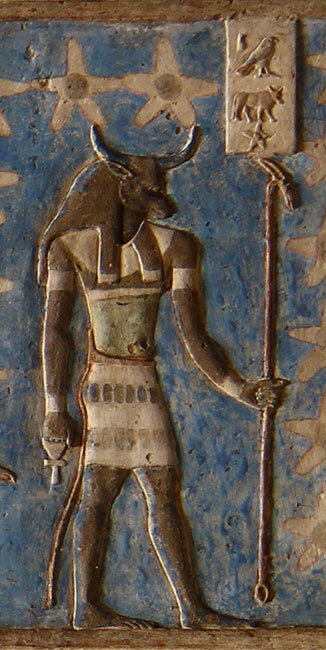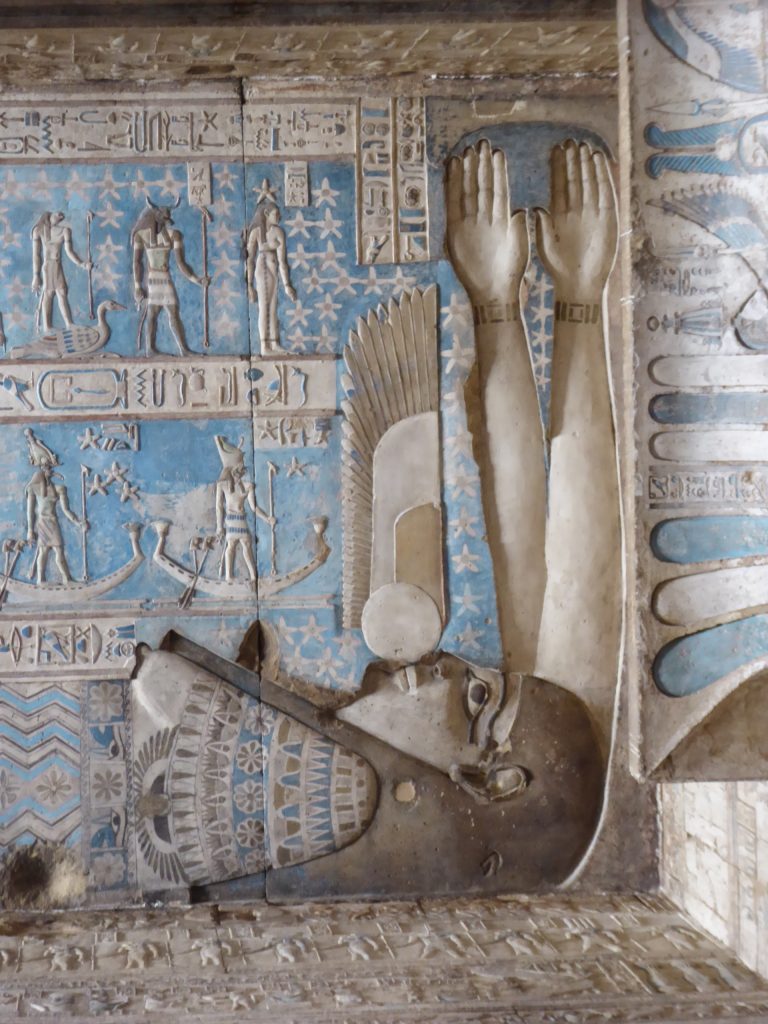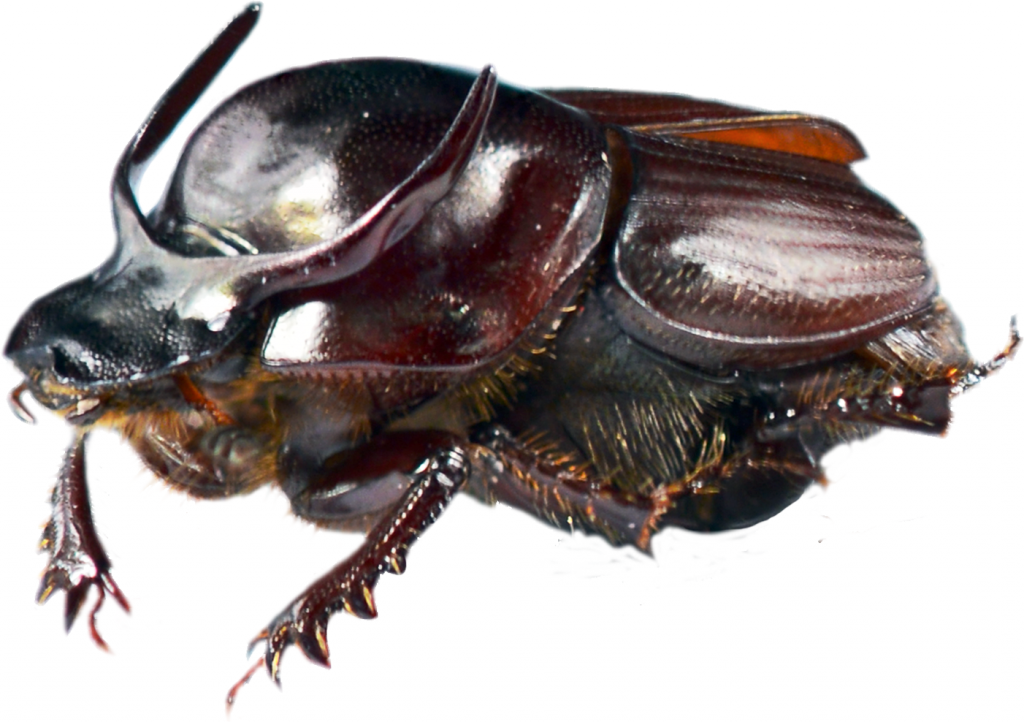
Page 4 of P. Bibliothèque National Supplément Grec. 574. The bilingual divination takes up the last third of page 4 and first half of page 5 © BnF Gallica 
Page 5 of P. Bibliothèque National Supplément Grec. 574. The bilingual divination takes up the last third of page 4 and first half of page 5 © BnF Gallica
This post is the second in a mini-series about bilingual recipes in Egyptian and Greek from the 3rd/4th century papyrus codex PGM IV (Greek Magical Papyrus 4). The ritual on pages 4 and 5 (PGM IV. 52-87) of the codex features a series of ritual instructions in Greek and invocations in Egyptian in a complex composite recipe for bringing about a theophany – the manifestation of a deity. This kind of recipe appears very often in the Greek and Demotic magical texts, and we saw another example from this same codex in the last post in this series.
In the Greek-language ritual instructions that begin this composite recipe, the practitioner is instructed to keep himself pure for seven days by abstaining from meat, uncooked food, and wine during daylight, and leaving exactly half of each meal in a turquoise vessel. At night, when the moon is full, the practitioner must then throw these leftovers onto the eastern-side of the ground of his city, village, or house – the remainder of the ritual instructions suggest, however, that an enclosed space is preferred. Every day during this cycle whenever the practitioner has returned to his house, and is about to eat or about to sleep, a formula – in Egyptian – must be recited seven times.
“He with the wooden neck; He with the stitched face: Come in to me; for I am Sabertoush, the great god in the sky!”
PGM IV.77
It is presumably on the last day of this cycle that a reed of two cubits in height is to be set into the ground, at a slightly slanted angle, from which a scarab with horsehair tied around its middle is to be suspended. Under the scarab an unused earthenware dish is to be placed in which a lit lamp is placed. The steam rising from the flame of the lamp is supposed to reach the scarab suspended above it. Having done this, when the practitioner returns from throwing out his leftovers, and must rush back to the lamp and remain inside. There the deity that the ritual has summoned will have manifested in order to threaten the practitioner to force them to release the ensnared scarab. But the text specifies that the practitioner should not be scared, and that the ensnared scarab will compel the manifest deity – “He with the wooden neck” and “He with the stitched face” – to tell the practitioner anything they wish to know. This is ensured through the compulsion of the ensnared scarab, and the fact that the practitioner identifies with “Sabertoush, the great god in the sky”. Only after foreknowledge has been acquired should the scarab be released, allowing the manifest deity to leave.

(2nd/3rd century CE) © The Trustees of the British Museum
The instructions for the release of the scarab, and thereby the manifest deity, are provided later in the composite recipe. When the practitioner releases the scarab, he is instructed to recite, in Egyptian: “Horus the Bull, Horus the Bull is my name. Horus the Bull is my true name.” Interestingly, Horus the bull is an identification of Saturn – one of the five planets which can be seen with the naked eye at night, the setting of this divination.

Horus the Bull on the ceiling of Dendera Temple © Joachim Friedrich Quack 
Horus the Bull among other planets and constellations © Aidan McRae Thomson
The text specifies that the practitioner should not be scared, even when threatened by the manifest deity who appears armed. Perhaps it is unsurprising, then, that a phylactery – a protective amulet – is provided as part of the recipe. In Egyptian, the names Shtēit and Chikntenha as well as the epithet “I am he who binds and loosens”, must be written with the blood from the hand or foot of a pregnant woman upon a new piece of papyrus, bound with linen, and worn on the left arm.
Following the end of this composite ritual, a second phylactery against demons, described as such in Greek, is also provided in the codex. This contains a collection of magical names, including the angelic Kouriēl and Iaphēl and the Greek invocation to “release”. It could be that this phylactery relates to the preceding ritual, given that other sources suggest that the risk of a manifestation of a deity going wrong would be the possession of the practitioner, or it could simply have been copied there without any relationship to the surrounding text. The ambiguities in the preceding ritual do not, unfortunately, allow us to clarify this point.
Unlike the Bilingual Direct Vision considered in the first post of this mini-series, the Bilingual Lamp Divination is set not during sunrise, but the opposite liminal environment of after sunset. As the light of the lamp would have provided the only light for the ritual, the most recent treatment of the recipe, by Edward Love, suggested that the light of the lamp was the medium through or in which the deity manifests. There are many examples of divination procedures involving lamps, in which the god is summoned to manifest in the flame or the shadow cast by the flame of the lamp – or simply behind the practitioner as he stares at the lamp. While this is possible, this recipe doesn’t seem to assume that the practitioner stares into the lamp for a long period of time, which is an important part of the procedure in the more explicit lamp divination spells. Nonetheless, the juxtaposition of the light of the moon among darkness outside the space in which the divination is to be undertaken, alongside the lone light of the lamp, would draw upon the liminality of light and dark.

The moon may have played into the ritual in another way. The text specifies that the scarab should be “bull-shaped” (tauromorphos), and we know from the fifth-century author Horapollo that the bull-shaped scarab was associated with the moon. When deities are threatened in the magical papyri, this is often through physically endangering something connected to them – in one text (PGM II.1-64), an image of the god is suspended over a flame in the same way as the scarab is here. While the deity summoned is not named, this implies that he is in some way lunar.
The mechanics of the practice involve various practical undertakings, but also a classic combination of invocations by name to particular deities, i.e. “He with the wooden neck and He with the stitched face”, followed by commands, such as “Come in to me”, preceding a statement in which a practitioner identifies with a deity in order to utilise their power: “I am Sabertoush”. Through these spoken acts, carried out while the torturing of the scarab by the flame of the lamp provides the compulsion for the ritual, the practitioner has acquired the power to ensure that deity with the wooden neck and stitched face manifests.
In both the ritual practiced and the deities invoked and identified with, this second example of a bilingual divination from PGM IV evidences a distinct way in which an individual could acquire foreknowledge from a deity. Threatening a deity, while shocking from many perspectives, was a common and well-attested ritual mechanic in the Egyptian tradition. By contrast, offering left-over food seems to be related to the Greek tradition that food which fell from the table was offered to the dead. This practice is also one which, despite the use of Old Coptic, does not engage in the same way with the traditional Egyptian deities invoked in the preceding example of the Bilingual Direct Vision. The next post will look at the final example of a bilingual divination from PGM IV, while the last two in this series will consider one bilingual recipe – a composite of erotic recipes – which is drawn almost exclusively from Pharaonic tradition, and another – a composite of exorcistic recipes – which is stems exclusively from outside Egyptian tradition, highlighting the diversity of practices preserved in just a few pages of this extraordinary codex.
Bibliography and Further Reading
For the most recent study of this recipe, see section §4.2 in Chapter 4 of Love, Edward O. D. Code-Switching with the Gods: The Bilingual (Old Coptic-Greek) Spells of PGM IV (P. Bibliothèque nationale supplément Grec. 574) and their Linguistic, Religious, and Socio-cultural Context in Late Roman Egypt. Berlin: De Gruyter, 2016. URL
For a discussion of the Greek practice of dedicating fallen food to the dead, see Sarah Iles Johnston, “Sacrifice in the Greek Magical Papyri.” In Magic and Ritual in the Ancient World, edited by Paul Mirecki and Marvin Meyer. Leiden: Brill, 2002: 378-386. URL
